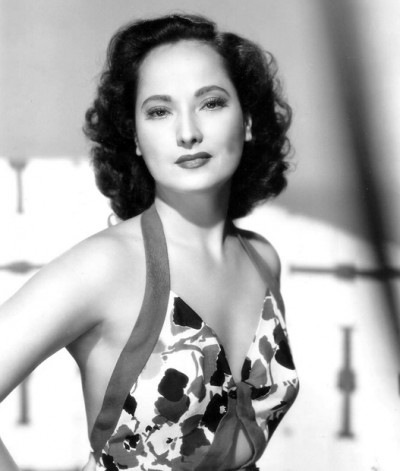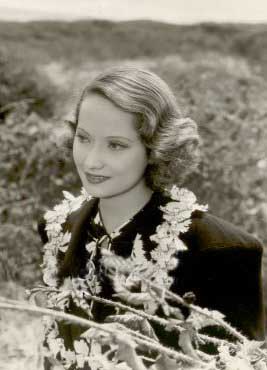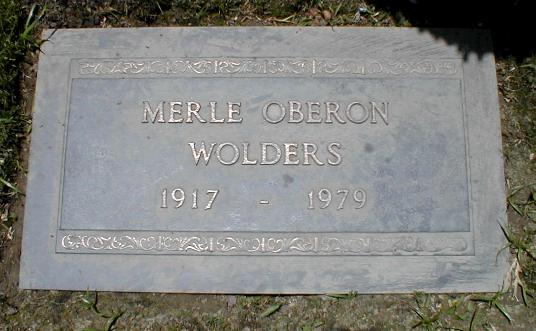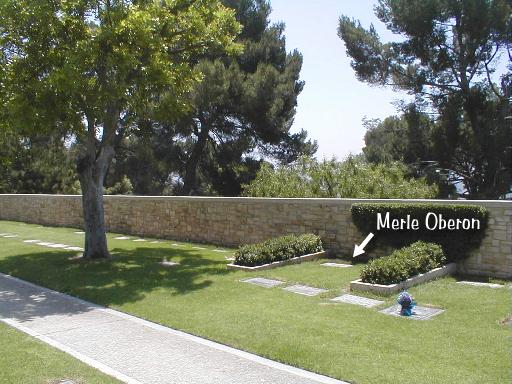Merle Oberon (Estelle Merle Thompson)

Estelle Merle Thompson was born in Bombay, British India on 19 February 1911. According to some sources, her birth name was Estelle Merle O’Brien Thompson. Merle was given “Queenie” as a nickname, in honour of Queen Mary, who visited India along with King George V in 1911. Over the years, Oberon obscured her parentage. Some sources claim Merle’s parents to have been Arthur Terrence O’Brien Thompson, a British mechanical engineer from Darlington, who worked in Indian Railways, and Charlotte Selby, a Eurasian from Ceylon with partial Māori heritage. However, at the age of fourteen, Charlotte had in Ceylon given birth to her first child Constance, the result of a relationship with Henry Alfred Selby, an Irish foreman of a tea planter, and some sources have claimed that Constance, twelve at the time of Merle’s birth, and not Charlotte, was Merle’s biological mother. Whatever the true relationship, Charlotte raised Merle as her own child and as Constance’s sister. Charlotte’s partner, Arthur Thompson, was listed as the father in Merle’s birth certificate, with the forename misspelled as “Arther”.
Constance eventually married and had four other children, Edna, Douglas, Harry and Stanislaus (Stan) with her husband Alexander Soares. Edna and Douglas moved at an early age to the UK and Harry later in life moved to Toronto, Canada and retained Constance’s maiden name, Selby. Stanislaus was the only child to keep his father’s last name of Soares and he currently resides in Surrey, British Columbia, Canada. All the siblings reportedly believed Merle to be their aunt (the sister of their mother Constance), when in fact she was their half-sister. When Harry Selby tracked down Merle’s birth certificate in Indian government records in Bombay (Mumbai), he was surprised to discover he was in fact Merle’s brother and not her nephew. He attempted to visit her in Los Angeles, but she refused to see him. Harry withheld this information from Oberon’s biographer Charles Higham, only eventually revealing it to Maree Delofski, the creator of The Trouble with Merle, a 2002 documentary produced by the Australian Broadcasting Corporation, which investigated the various conflicting versions of Merle’s origin.
In 1914, Arthur Thompson joined the British Army and later died of pneumonia on the Western Front during the Battle of the Somme. Merle, with her “mother” (really her grandmother), led an impoverished existence in shabby Bombay flats for a few years. Then, in 1917, they moved to better circumstances in Calcutta. Oberon received a foundation scholarship to attend La Martiniere Calcutta for Girls, one of the best private schools in Calcutta. There, she was constantly taunted for her unconventional parentage and eventually quit school and received her lessons at home.
Oberon first performed with the Calcutta Amateur Dramatic Society. She was also completely enamored of the films and enjoyed going out to nightclubs. Indian journalist Sunanda K. Datta-Ray claimed that Merle worked as a telephone operator in Calcutta under the name Queenie Thomson, and won a contest at Firpo’s Restaurant there, before the outset of her film career. In 1929, Merle met a former actor named Colonel Ben Finney at Firpo’s, and dated him. However, when he saw Oberon’s dark-skinned mother one night at her flat, and realised Oberon was mixed-race, he decided to end the relationship. However, Finney promised to introduce her to Rex Ingram of Victorine Studios, if she was prepared to travel to France. which she readily did. After packing all their belongings and moving to France, Oberon and her mother found that their supposed benefactor avoided them, although he had left a good word for Oberon with Ingram at the studios in Nice. Ingram liked Oberon’s exotic appearance and quickly hired her to be an extra in a party scene in a film named The Three Passions.
Oberon arrived in England for the first time in 1928, aged 17. Initially she worked as a club hostess under the name Queenie O’Brien and played in minor and unbilled roles in various films. “I couldn’t dance or sing or write or paint. The only possible opening seemed to be in some line in which I could use my face. This was, in fact, no better than a hundred other faces, but it did possess a fortunately photogenic quality,” she modestly told a journalist at Film Weekly in 1939. In view of the information discovered since this 1939 article (see preceding section) this should be seen as part of a myth perpetrated by Oberon, since apparently she did not reach Europe until 1929.
Her film career received a major boost when the director Alexander Korda took an interest and gave her a small but prominent role, under the name Merle Oberon, as Anne Boleyn in The Private Life of Henry VIII (1933) opposite Charles Laughton. The film became a major success and she was then given leading roles, such as Lady Blakeney in The Scarlet Pimpernel (1934) with Leslie Howard, who became her lover for a while.
Oberon’s career benefited from her relationship, and later marriage, to Korda. He sold “shares” of her contract to producer Samuel Goldwyn, who gave her good vehicles in Hollywood. Her “mother” stayed behind in England. Oberon earned her sole Academy Award for Best Actress nomination for The Dark Angel (1935) produced by Goldwyn. Around this time she had a serious romance with David Niven, and according to his authorized biography, even wanted to marry him, but he wasn’t faithful to her. She was selected to star in Korda’s film I, Claudius (1937) as Messalina, but a serious car accident resulted in filming being abandoned. Oberon was scarred for life, but skilled lighting technicians were able to hide her injuries from cinema audiences.[citation needed] She went on to appear as Cathy in her most famous film, Wuthering Heights (opposite Laurence Olivier; 1939), as George Sand in A Song to Remember (1945) and as the Empress Josephine in Désirée (1954).
According to Princess Merle, the biography written by Charles Higham with Roy Moseley, Oberon suffered even further damage to her complexion in 1940 from a combination of cosmetic poisoning and an allergic reaction to sulfa drugs. Alexander Korda sent her to a skin specialist in New York City, where she underwent several dermabrasion procedures. The results, however, were only partially successful; without makeup, one could see noticeable pitting and indentation of her skin. Charlotte died in 1937. In 1949 Oberon commissioned paintings of her mother from an old photograph. The paintings hung in all her homes until Oberon’s own death in 1979. Merle Oberon had a brief affair in 1941 with Richard Hillary, an RAF fighter pilot who had been badly burned in the Battle of Britain. They met while he was on a good-will tour of the United States. He later became well known as the author of a best-selling book, The Last Enemy.
Merle Oberon became Lady Korda when her husband was knighted in 1942. At the time, the couple were based at Hills House in Denham, England. She divorced him in 1945, to marry cinematographer Lucien Ballard. Ballard devised a special camera light for her to eliminate her facial scars on film. The light became known as the “Obie”. She married twice more, to Italian-born industrialist, Bruno Pagliai (with whom she adopted two children; they lived in Cuernavaca, Morelos, Mexico) and Dutch actor Robert Wolders – later companion to actresses Audrey Hepburn and Leslie Caron – before her retirement in Malibu, California, where she died, aged 68, after suffering a stroke. She was interred at Forest Lawn Memorial Park Cemetery in Glendale, California. Merle Oberon has a star on the Hollywood Walk of Fame (at 6250 Hollywood Boulevard) for her contributions to Motion Pictures. Michael Korda, nephew of Alexander Korda, wrote a roman à clef about Oberon after her death entitled Queenie. This was also turned into a television miniseries starring Mia Sara.
Born
- February, 19, 1911
- Maharashtra, India
Died
- November, 23, 1979
- USA
- Los Angeles County, California
Cemetery
- Forest Lawn Memorial Park (Glendale)
- Los Angeles County, California
- USA




